ion
-
 IAMCOMPANY, an educational technology startup created by a KAIST student, featured online in EdSurge
EdSurge is a U.S.-based online news site focused on education and technology innovation, which published an article, dated August 12, 2014, on IAMCOMPANY (http://iamcompany.net), a startup created by a KAIST student, Inmo (Ryan) Chung.
The article introduced one of the company’s most popular and free smartphone applications called “IAMSCHOOL” that “funnels school announcements and class notices to parents’ smartphones using a format similar to Twitter and Google+.”
For more about IAMCOMPANY, please visit the link below:
EdSurge, August 12, 2014
“South Korea’s Biggest Educational Information App Plans Pan-Asian Expansion”
https://www.edsurge.com/n/2014-08-12-south-korea-s-biggest-educational-information-app-plans-pan-asian-expansion
2014.08.19 View 9292
IAMCOMPANY, an educational technology startup created by a KAIST student, featured online in EdSurge
EdSurge is a U.S.-based online news site focused on education and technology innovation, which published an article, dated August 12, 2014, on IAMCOMPANY (http://iamcompany.net), a startup created by a KAIST student, Inmo (Ryan) Chung.
The article introduced one of the company’s most popular and free smartphone applications called “IAMSCHOOL” that “funnels school announcements and class notices to parents’ smartphones using a format similar to Twitter and Google+.”
For more about IAMCOMPANY, please visit the link below:
EdSurge, August 12, 2014
“South Korea’s Biggest Educational Information App Plans Pan-Asian Expansion”
https://www.edsurge.com/n/2014-08-12-south-korea-s-biggest-educational-information-app-plans-pan-asian-expansion
2014.08.19 View 9292 -
 EureCar, KAIST's Self-Driving Car, Made It to the Global Student Design Finalists at the 2014 National Instruments Annual Conference in Austin, Texas
The National Instruments Week 2014, an annual conference hosted by the National Instruments Corporation (NI), a global producer of automated test equipment and virtual instrumentation software, was held on August 4-7, 2014 at the Austin Convention Center in Texas. This international conference on graphical system design brought together more than 3,200 leading engineers and scientists across a spectrum of industries, from automotive to telecommunications, to robotics to energy.
On the third day of the keynote sessions at the conference, August 7, 2014, the winner of the Global Student Design Competition (GSDC) was announced.
EureCar, a self-driving car developed by Professor “David” Hyunchul Shim at the Department of Aerospace Engineering, KAIST, and his students, was one of the three finalists that were invited to the conference to contend for the Global Grand Prize.
The three finalists, each selected from a regional competition, were: EureCar from KAIST, Sepios, a nautical robot from Swiss Federal Institute of Technology in Zürich (ETH Zürich), and NASA Student Launch Project from the University of North Carolina at Charlotte. A total of 3,250 student research teams from 25 countries entered the 2014 GSDC, and the winner was ETH Zürich.
GSDC is designed to promote a better understanding and application by engineering students of NI’s system design software and hardware in their research and learning. Participating students utilized NI’s LabVIEW (software) and CompactRIO (hardware) to create their own solutions to engineering problems that encompass inexpensive medical devices to complex underwater autonomous vehicles.
For details about the finalists, please go to:
http://www.kaist.ac.kr/Upl/downfile/TS4159_Wahby_Student_Design_Showcase.pdf
2014.08.18 View 10198
EureCar, KAIST's Self-Driving Car, Made It to the Global Student Design Finalists at the 2014 National Instruments Annual Conference in Austin, Texas
The National Instruments Week 2014, an annual conference hosted by the National Instruments Corporation (NI), a global producer of automated test equipment and virtual instrumentation software, was held on August 4-7, 2014 at the Austin Convention Center in Texas. This international conference on graphical system design brought together more than 3,200 leading engineers and scientists across a spectrum of industries, from automotive to telecommunications, to robotics to energy.
On the third day of the keynote sessions at the conference, August 7, 2014, the winner of the Global Student Design Competition (GSDC) was announced.
EureCar, a self-driving car developed by Professor “David” Hyunchul Shim at the Department of Aerospace Engineering, KAIST, and his students, was one of the three finalists that were invited to the conference to contend for the Global Grand Prize.
The three finalists, each selected from a regional competition, were: EureCar from KAIST, Sepios, a nautical robot from Swiss Federal Institute of Technology in Zürich (ETH Zürich), and NASA Student Launch Project from the University of North Carolina at Charlotte. A total of 3,250 student research teams from 25 countries entered the 2014 GSDC, and the winner was ETH Zürich.
GSDC is designed to promote a better understanding and application by engineering students of NI’s system design software and hardware in their research and learning. Participating students utilized NI’s LabVIEW (software) and CompactRIO (hardware) to create their own solutions to engineering problems that encompass inexpensive medical devices to complex underwater autonomous vehicles.
For details about the finalists, please go to:
http://www.kaist.ac.kr/Upl/downfile/TS4159_Wahby_Student_Design_Showcase.pdf
2014.08.18 View 10198 -
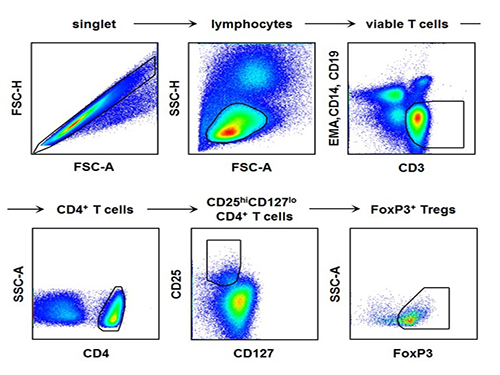 Regulatory T Cells Influence Liver Damage of Hepatitis A Patients
Liver damage becomes more severe with the decrease of regulatory T cells
“This research will aid the development of hepatitis A targeted drug,” said a KAIST researcher.
The KAIST Graduate School of Medical Science and Engineering’s Professor Eui-Cheol Shin and his research team have identified the mechanism, explaining how the regulatory T cells are responsible for the body’s immune system and how they have induced liver damage of hepatitis A patients.
The research results were published online in the July 9th edition of ‘Gut,’ the world’s most prominent journal in the field of gastroenterology.
Hepatitis A is an acute form of hepatitis caused by hepatitis A virus. The virus spreads through oral contact and enters the body via digestive organs.
Regulatory T cells play an important role in maintaining the homeostasis of the body’s immune system by inhibiting the activation of other immune cells. In the case of chronic viral infections, regulatory T cells are known to contribute to the duration of the infection, weakening the immune response to virus infections. However, there has been no information on what roles the regulatory T cells perform in the case of acute viral infections.
The research team used the fluorescence flow cytometry technique to determine the number and characteristics of a variety of immune cells, including regulatory T cells, in the blood of hepatitis A patients.
Consequently, the researchers confirmed that the decrease in the regulatory T cells immune inhibitory ability was consistent with a significant reduction in the number of regulatory T cells in the blood of hepatitis A patients. Furthermore, it was identified that the more noticeable decrease of regulatory T cells led to the occurrence of a more severe liver injury.
The analysis of hepatitis A patient’s blood proved that the cause of the decrease in the number and function of regulatory T cells was the increased expression of cell surface protein ‘Fas,’ which induces cell death.
Professor Shin said, “This study is the first case which proposes the mechanism for clinical aspects in not only hepatitis A, but also acute virus infection.” He added on the future prospect of the research that: “In the future, we can prevent tissue damage by inhibiting cell death of regulatory T cells for severe acute viral infections that do not have an effective treatment for the virus itself.”
[Picture]
The picture shows the process of fluorescence flow cytometry technique to study regulatory T cell in the blood of hepatitis A patients.
2014.08.11 View 11570
Regulatory T Cells Influence Liver Damage of Hepatitis A Patients
Liver damage becomes more severe with the decrease of regulatory T cells
“This research will aid the development of hepatitis A targeted drug,” said a KAIST researcher.
The KAIST Graduate School of Medical Science and Engineering’s Professor Eui-Cheol Shin and his research team have identified the mechanism, explaining how the regulatory T cells are responsible for the body’s immune system and how they have induced liver damage of hepatitis A patients.
The research results were published online in the July 9th edition of ‘Gut,’ the world’s most prominent journal in the field of gastroenterology.
Hepatitis A is an acute form of hepatitis caused by hepatitis A virus. The virus spreads through oral contact and enters the body via digestive organs.
Regulatory T cells play an important role in maintaining the homeostasis of the body’s immune system by inhibiting the activation of other immune cells. In the case of chronic viral infections, regulatory T cells are known to contribute to the duration of the infection, weakening the immune response to virus infections. However, there has been no information on what roles the regulatory T cells perform in the case of acute viral infections.
The research team used the fluorescence flow cytometry technique to determine the number and characteristics of a variety of immune cells, including regulatory T cells, in the blood of hepatitis A patients.
Consequently, the researchers confirmed that the decrease in the regulatory T cells immune inhibitory ability was consistent with a significant reduction in the number of regulatory T cells in the blood of hepatitis A patients. Furthermore, it was identified that the more noticeable decrease of regulatory T cells led to the occurrence of a more severe liver injury.
The analysis of hepatitis A patient’s blood proved that the cause of the decrease in the number and function of regulatory T cells was the increased expression of cell surface protein ‘Fas,’ which induces cell death.
Professor Shin said, “This study is the first case which proposes the mechanism for clinical aspects in not only hepatitis A, but also acute virus infection.” He added on the future prospect of the research that: “In the future, we can prevent tissue damage by inhibiting cell death of regulatory T cells for severe acute viral infections that do not have an effective treatment for the virus itself.”
[Picture]
The picture shows the process of fluorescence flow cytometry technique to study regulatory T cell in the blood of hepatitis A patients.
2014.08.11 View 11570 -
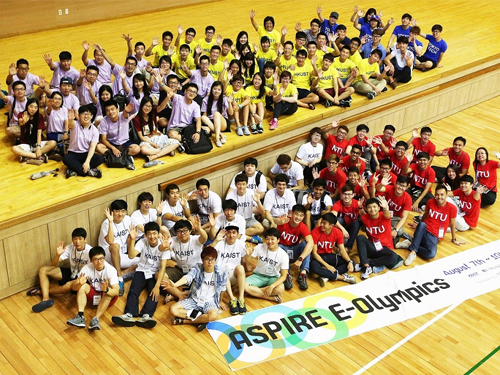 ASPIRE League 2014: E-Olympics among Five Asian Universities
About 150 undergraduate students from five leading science and technology (S&T) universities in Asia met at the KAIST campus to attend the E-Olympics on August 7-9, 2014.
The E-Olympics began as a student exchange conference held under the Asian Science and Technology Pioneering Institutes of Research and Education (ASPIRE) League, which offers a variety of events, such as workshops, sports matches, lab visits, special lectures, and art performances, to promote academic and research collaborations and cultural sharing between the students of the league member universities.
Founded in 2009, the ASPIRE League is a university consortium consisted of five top S&T universities in Asia: KAIST in Korea, the Hong Kong University of Science and Technology (HKUST) and Tsinghua University in China, Nanyang Technological University (NTU) in Singapore, and Tokyo Institute of Technology (Tokyo Tech) in Japan. The ASPIRE League aims to provide a knowledge and technology hub for innovation in Asia through the advancement of science and technology and the development of human resources.
Since its start, the ASPIRE League has been holding an annual conference with programs for research collaboration, student exchange, educational cooperation, and satellite laboratories among professors, senior managers, and students of the member universities. This year, however, the consortium decided to dedicate the conference to students by holding the E-Olympics.
Each university sent 30 students to KAIST for the participation of the E-Olympics. For three days, participating students engaged in discussions and presentations at academic workshops; held athletic games including a relay race, basketball, and a rowing race; and toured a few KAIST laboratories, among them: the E-mobility Research Center, the Bio-imaging and Cell Signaling Research Center, the Mechatronics Systems and Control Center, and the Center of Field Robotics for Innovation, Exploration and Defense.
The students also attended a music concert performed by a KAIST student club and a lecture entitled “Entrepreneurship through Global Networking” that emphasized the importance of personnel networking in transferring technological innovation into business opportunities.
Chang-Dong Yoo, the Dean of the International Office at KAIST, said, “The E-Olympics will offer students from top science and technology universities in Asia opportunities to interact with each other on a more personal level. I hope that through many of the E-Olympics programs, the students will learn about each other’s culture and academic strength and develop a sense of community to create a “New Asia” by working together.”
2014.08.11 View 14948
ASPIRE League 2014: E-Olympics among Five Asian Universities
About 150 undergraduate students from five leading science and technology (S&T) universities in Asia met at the KAIST campus to attend the E-Olympics on August 7-9, 2014.
The E-Olympics began as a student exchange conference held under the Asian Science and Technology Pioneering Institutes of Research and Education (ASPIRE) League, which offers a variety of events, such as workshops, sports matches, lab visits, special lectures, and art performances, to promote academic and research collaborations and cultural sharing between the students of the league member universities.
Founded in 2009, the ASPIRE League is a university consortium consisted of five top S&T universities in Asia: KAIST in Korea, the Hong Kong University of Science and Technology (HKUST) and Tsinghua University in China, Nanyang Technological University (NTU) in Singapore, and Tokyo Institute of Technology (Tokyo Tech) in Japan. The ASPIRE League aims to provide a knowledge and technology hub for innovation in Asia through the advancement of science and technology and the development of human resources.
Since its start, the ASPIRE League has been holding an annual conference with programs for research collaboration, student exchange, educational cooperation, and satellite laboratories among professors, senior managers, and students of the member universities. This year, however, the consortium decided to dedicate the conference to students by holding the E-Olympics.
Each university sent 30 students to KAIST for the participation of the E-Olympics. For three days, participating students engaged in discussions and presentations at academic workshops; held athletic games including a relay race, basketball, and a rowing race; and toured a few KAIST laboratories, among them: the E-mobility Research Center, the Bio-imaging and Cell Signaling Research Center, the Mechatronics Systems and Control Center, and the Center of Field Robotics for Innovation, Exploration and Defense.
The students also attended a music concert performed by a KAIST student club and a lecture entitled “Entrepreneurship through Global Networking” that emphasized the importance of personnel networking in transferring technological innovation into business opportunities.
Chang-Dong Yoo, the Dean of the International Office at KAIST, said, “The E-Olympics will offer students from top science and technology universities in Asia opportunities to interact with each other on a more personal level. I hope that through many of the E-Olympics programs, the students will learn about each other’s culture and academic strength and develop a sense of community to create a “New Asia” by working together.”
2014.08.11 View 14948 -
 2014 NEREC Conference on Nuclear Nonproliferation: July 31-August 1, 2014, Seoul
The Nonproliferation Education and Research Center (NEREC) at KAIST hosted an international conference on nuclear nonproliferation on July 31-August 1, 2014 in Seoul. The Ministry of Science, ICT and Future Planning, the Korean Nuclear Safety and Security Commission, and the Korea Nuclear Policy Society (KNPS) sponsored the event.
Over one hundred experts and "thought leaders" in nuclear security and nonproliferation attended the conference and discussed issues related to the nonproliferation of nuclear weapons, the role of scientific community in mitigating nuclear threat and promoting the peaceful use of nuclear power, and nuclear disarmament policy.
Keynote speakers were: Steven E. Miller, Director of International Security Program at Belfer Center for Science and International Affairs, Harvard University; Scott D. Sagan, Senior Fellow of the Center for International Security and Cooperation, Freeman Spogli Institute for International Studies, Stanford University; Mark Fitzpatrick, Director of the Nonproliferation and Disarmament Programme, International Institute for Strategic Studies; Sang-Hyun Lee, Director of Security Strategy, Sejong Institute; and Man-Sung Yim, Professor of Nuclear and Quantum Engineering, KAIST.
At the conference, Professor Yim, Director of KAIST NEREC said, “Korea has grown to become a key player in the development of commercial nuclear energy over the past decades. We hope that our conference encourages Korea to be more involved in the efforts of the international community to enhance the global nonproliferation regime.”
2014.08.05 View 16800
2014 NEREC Conference on Nuclear Nonproliferation: July 31-August 1, 2014, Seoul
The Nonproliferation Education and Research Center (NEREC) at KAIST hosted an international conference on nuclear nonproliferation on July 31-August 1, 2014 in Seoul. The Ministry of Science, ICT and Future Planning, the Korean Nuclear Safety and Security Commission, and the Korea Nuclear Policy Society (KNPS) sponsored the event.
Over one hundred experts and "thought leaders" in nuclear security and nonproliferation attended the conference and discussed issues related to the nonproliferation of nuclear weapons, the role of scientific community in mitigating nuclear threat and promoting the peaceful use of nuclear power, and nuclear disarmament policy.
Keynote speakers were: Steven E. Miller, Director of International Security Program at Belfer Center for Science and International Affairs, Harvard University; Scott D. Sagan, Senior Fellow of the Center for International Security and Cooperation, Freeman Spogli Institute for International Studies, Stanford University; Mark Fitzpatrick, Director of the Nonproliferation and Disarmament Programme, International Institute for Strategic Studies; Sang-Hyun Lee, Director of Security Strategy, Sejong Institute; and Man-Sung Yim, Professor of Nuclear and Quantum Engineering, KAIST.
At the conference, Professor Yim, Director of KAIST NEREC said, “Korea has grown to become a key player in the development of commercial nuclear energy over the past decades. We hope that our conference encourages Korea to be more involved in the efforts of the international community to enhance the global nonproliferation regime.”
2014.08.05 View 16800 -
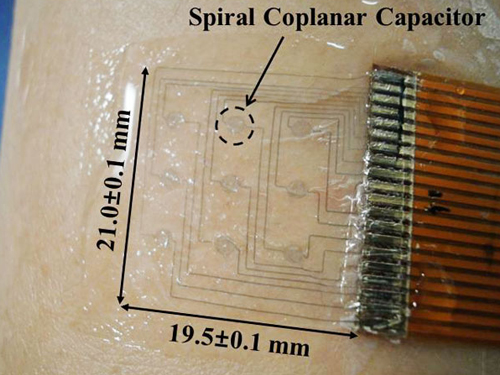 Newsweek: The Goosebump Sensor That Knows How You Feel
Newsweek covered the introduction of the goosebump sensor invented by Professor Young-Ho Cho of the Department of Bio and Brain Engineering at KAIST in an article dated July 27, 2014.
The article entitled “The Goosebump Sensor That Knows How You Feel” explains how the sensor works and reports on the current research and development trends in emotion-sensing technology.
Professor Cho’s research paper was originally published in the journal Applied Physics Letters on June 24, 2014, titled “A Flexible Skin Piloerection Monitoring Sensor."
Newsweek, July 27, 2014
“The Goosebump Sensor That Knows How You Feel”
http://www.newsweek.com/goosebump-sensor-knows-how-you-feel-260689
2014.07.28 View 9551
Newsweek: The Goosebump Sensor That Knows How You Feel
Newsweek covered the introduction of the goosebump sensor invented by Professor Young-Ho Cho of the Department of Bio and Brain Engineering at KAIST in an article dated July 27, 2014.
The article entitled “The Goosebump Sensor That Knows How You Feel” explains how the sensor works and reports on the current research and development trends in emotion-sensing technology.
Professor Cho’s research paper was originally published in the journal Applied Physics Letters on June 24, 2014, titled “A Flexible Skin Piloerection Monitoring Sensor."
Newsweek, July 27, 2014
“The Goosebump Sensor That Knows How You Feel”
http://www.newsweek.com/goosebump-sensor-knows-how-you-feel-260689
2014.07.28 View 9551 -
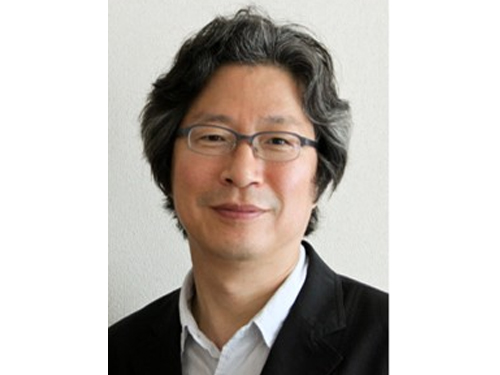 The Journal of Clinical Investigation: Researchers Uncover the Secret Lymphatic Identity of the Schlemm's Canal
The Journal of Clinical Investigation (JCI), a peer-reviewed, top-tier medical journal published by the American Society for Clinical Investigation, carried a commentary entitled “Schlemm’s Canal: More Than Meets the Eye, Lymphatics in Disguise” in the July 25, 2014 issue.
In the commentary, the authors compared a research paper (“Lymphatic regular PROX1 determines Schlemm’s canal integrity and identity”) by Professor Gou-Young Koh of the Graduate School of Medical Science and Engineering at KAIST with research work from the University of Helsinki (article entitled “The Schlemm’s canal is a VEGF-C/VEGFR-3 responsive lymphatic-like vessel”).
The JCI released a press statement dated July 25, 2014 on its commentary. It mentioned that glaucoma, one of the leading causes of blindness worldwide, elevates eye pressure owing to poor drainage of aqueous humor. A specialized structure called “Schlemm’s canal” funnels aqueous humor from the eye back into circulation, which is critical to prevent pressure buildup in the eye. The article discussed the role of Schlemm’s canal in the context of lymphatic vascular characteristics by reviewing two research group’s papers back-to-back.
For the full text of the press release, please visit the link below:
Press Release from the Journal of Clinical Investigation, July 25, 2014
“Researchers uncover the secret lymphatic identity of the Schlemm’s canal”
http://www.eurekalert.org/pub_releases/2014-07/joci-rut072414.php
2014.07.28 View 9504
The Journal of Clinical Investigation: Researchers Uncover the Secret Lymphatic Identity of the Schlemm's Canal
The Journal of Clinical Investigation (JCI), a peer-reviewed, top-tier medical journal published by the American Society for Clinical Investigation, carried a commentary entitled “Schlemm’s Canal: More Than Meets the Eye, Lymphatics in Disguise” in the July 25, 2014 issue.
In the commentary, the authors compared a research paper (“Lymphatic regular PROX1 determines Schlemm’s canal integrity and identity”) by Professor Gou-Young Koh of the Graduate School of Medical Science and Engineering at KAIST with research work from the University of Helsinki (article entitled “The Schlemm’s canal is a VEGF-C/VEGFR-3 responsive lymphatic-like vessel”).
The JCI released a press statement dated July 25, 2014 on its commentary. It mentioned that glaucoma, one of the leading causes of blindness worldwide, elevates eye pressure owing to poor drainage of aqueous humor. A specialized structure called “Schlemm’s canal” funnels aqueous humor from the eye back into circulation, which is critical to prevent pressure buildup in the eye. The article discussed the role of Schlemm’s canal in the context of lymphatic vascular characteristics by reviewing two research group’s papers back-to-back.
For the full text of the press release, please visit the link below:
Press Release from the Journal of Clinical Investigation, July 25, 2014
“Researchers uncover the secret lymphatic identity of the Schlemm’s canal”
http://www.eurekalert.org/pub_releases/2014-07/joci-rut072414.php
2014.07.28 View 9504 -
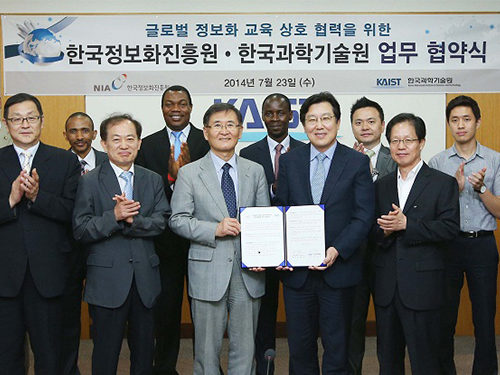 Cooperation Agreement with Korea's National Information Society Agency on Global Information Education
KAIST and the National Information Society Agency (NIA) signed a memorandum of understanding (MOU) to launch global information education cooperation. President Steve Kang and President Kwang-Soo Chang of NIA, attended the signing ceremony held at KAIST on July 23, 2014.
Under the MOU, KAIST and NIA will jointly develop contents for global information education; plan and operate educational programs; provide consulting services to train experts in information; and implement exchange programs for faculty and students.
In addition, the two organizations plan to cooperate in the establishment of a network, consisting of alumni and students from the Global Information and Telecommunications Technology Program at KAIST (KAIST ITTP), to deliver a Korean model of electronic government (e-government) to other nations worldwide.
President Kang said, “Korea is one of the most wired nations in the world. By working with the NIA, we hope to have an opportunity to export our knowledge and experiences in the construction of e-governments to less technologically advanced nations by becoming a good precedent for them.”
Since 2006, KAIST has invited 20-30 government officials from underdeveloped or developing countries each year, offering them enrollment in graduate programs at KAIST ITTP.
2014.07.25 View 8450
Cooperation Agreement with Korea's National Information Society Agency on Global Information Education
KAIST and the National Information Society Agency (NIA) signed a memorandum of understanding (MOU) to launch global information education cooperation. President Steve Kang and President Kwang-Soo Chang of NIA, attended the signing ceremony held at KAIST on July 23, 2014.
Under the MOU, KAIST and NIA will jointly develop contents for global information education; plan and operate educational programs; provide consulting services to train experts in information; and implement exchange programs for faculty and students.
In addition, the two organizations plan to cooperate in the establishment of a network, consisting of alumni and students from the Global Information and Telecommunications Technology Program at KAIST (KAIST ITTP), to deliver a Korean model of electronic government (e-government) to other nations worldwide.
President Kang said, “Korea is one of the most wired nations in the world. By working with the NIA, we hope to have an opportunity to export our knowledge and experiences in the construction of e-governments to less technologically advanced nations by becoming a good precedent for them.”
Since 2006, KAIST has invited 20-30 government officials from underdeveloped or developing countries each year, offering them enrollment in graduate programs at KAIST ITTP.
2014.07.25 View 8450 -
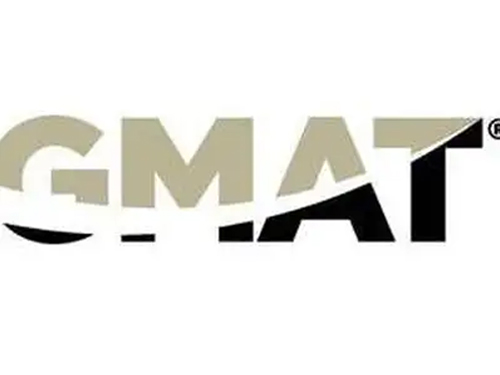 Interview with KAIST MBA: 5 Reasons to Study in Korea for Your MBA
The Graduate Management Admission Council (GMAC) published online an interview with Mija Yoon, the director of the Admission & Placement Center at KAIST College of Business (KAIST MBA) in Seoul, Korea, on July 18, 2014.
In the interview, Director Yoon listed the benefits of studying MBA programs at Korean universities, as well as working in Korea.
For the article, please visit the link below:
GMAT, July 18, 2014
“5 Reasons to Study in Korea for Your MBA”
http://www.beatthegmat.com/mba/2014/07/18/5-reasons-to-study-in-korea-for-your-mba
2014.07.21 View 10378
Interview with KAIST MBA: 5 Reasons to Study in Korea for Your MBA
The Graduate Management Admission Council (GMAC) published online an interview with Mija Yoon, the director of the Admission & Placement Center at KAIST College of Business (KAIST MBA) in Seoul, Korea, on July 18, 2014.
In the interview, Director Yoon listed the benefits of studying MBA programs at Korean universities, as well as working in Korea.
For the article, please visit the link below:
GMAT, July 18, 2014
“5 Reasons to Study in Korea for Your MBA”
http://www.beatthegmat.com/mba/2014/07/18/5-reasons-to-study-in-korea-for-your-mba
2014.07.21 View 10378 -
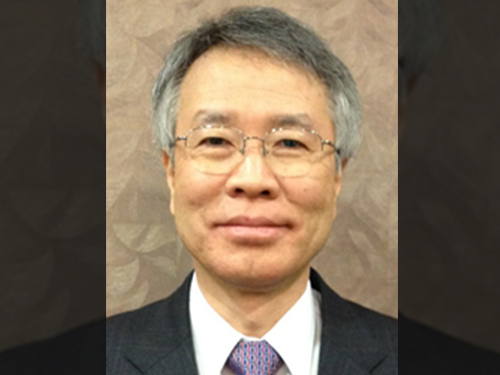 Professor Kyu-Young Whang Receives Contributions Award from ACM SIGMOD
Kyu-Young Whang, Distinguished Professor of Computer Science at KAIST, was the recipient of the 2014 ACM SIGMOND Contributions Award.
Founded in 1947, the Association for Computing Machinery (ACM) is the world’s largest educational and scientific computing society, delivering resources that advance computing as a science and profession.
SIGMOD is the Association for Computing Machinery’s Special Interest Group on Management of Data, which specializes in large-scale data management problems and databases.
Since 1992, ACM SIGMOND has presented the contributions award to one scientist who has made significant contributions to the field of database systems through research funding, education, and professional services. So far, 23 people including Professor Whang have received the award.
Professor Whang was recognized for his key role in the growth of international conferences and journals in the field of databases such as The VLDB Journal (The International Journal on Very Large Data Bases), VLDB Endowment Inc., IEEE Technical Committee on Data Engineering, and Database Systems for Advanced Applications (DASFAA). IEEE stands for the Institute of Electrical and Electronics Engineering.
For the full list of ACM SIGMOND Contributions Award recipients, please go to
http://www.sigmod.org/sigmod-awards/sigmod-awards#contributions.
2014.07.15 View 10786
Professor Kyu-Young Whang Receives Contributions Award from ACM SIGMOD
Kyu-Young Whang, Distinguished Professor of Computer Science at KAIST, was the recipient of the 2014 ACM SIGMOND Contributions Award.
Founded in 1947, the Association for Computing Machinery (ACM) is the world’s largest educational and scientific computing society, delivering resources that advance computing as a science and profession.
SIGMOD is the Association for Computing Machinery’s Special Interest Group on Management of Data, which specializes in large-scale data management problems and databases.
Since 1992, ACM SIGMOND has presented the contributions award to one scientist who has made significant contributions to the field of database systems through research funding, education, and professional services. So far, 23 people including Professor Whang have received the award.
Professor Whang was recognized for his key role in the growth of international conferences and journals in the field of databases such as The VLDB Journal (The International Journal on Very Large Data Bases), VLDB Endowment Inc., IEEE Technical Committee on Data Engineering, and Database Systems for Advanced Applications (DASFAA). IEEE stands for the Institute of Electrical and Electronics Engineering.
For the full list of ACM SIGMOND Contributions Award recipients, please go to
http://www.sigmod.org/sigmod-awards/sigmod-awards#contributions.
2014.07.15 View 10786 -
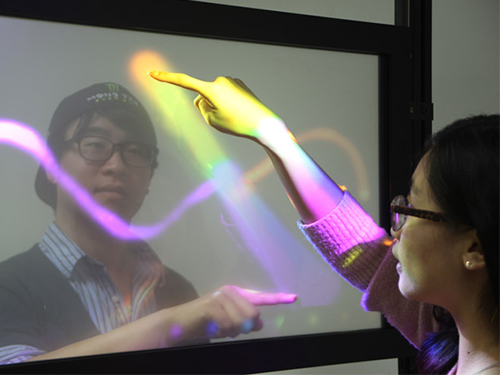 KAIST develops TransWall, a transparent touchable display wall
At a busy shopping mall, shoppers walk by store windows to find attractive items to purchase. Through the windows, shoppers can see the products displayed, but may have a hard time imagining doing something beyond just looking, such as touching the displayed items or communicating with sales assistants inside the store. With TransWall, however, window shopping could become more fun and real than ever before.
Woohun Lee, a professor of Industrial Design at KAIST, and his research team have recently developed TransWall, a two-sided, touchable, and transparent display wall that greatly enhances users' interpersonal experiences.
With an incorporated surface transducer, TransWall offers audio and vibrotactile feedback to the users. As a result, people can collaborate via a shared see-through display and communicate with one another by talking or even touching one another through the wall. A holographic screen film is inserted between the sheets of plexiglass, and beam projectors installed on each side of the wall project images that are reflected.
TransWall is touch-sensitive on both sides. Two users standing face-to-face on each side of the wall can touch the same spot at the same time without any physical interference. When this happens, TransWall provides the users with specific visual, acoustic, and vibrotactile experiences, allowing them to feel as if they are touching one another.
Professor Lee said, "TransWall concept enables people to see, hear, or even touch others through the wall while enjoying gaming and interpersonal communication. TransWall can be installed inside buildings, such as shopping centers, museums, and theme parks, for people to have an opportunity to collaborate even with strangers in a natural way."
He further added that "TransWall will be useful in places that require physical isolation for high security and safety, germ-free rooms in hospitals, for example." TransWall will allow patients to interact with family and friends without compromising medical safety.
TransWall was exhibited at the 2014 Conference on Computer-Human Interaction (CHI) held from April 26, 2014 to May 1, 2014 in Toronto, Canada.
YouTube Link:
http://www.youtube.com/watch?v=1QdYC_kOQ_w&list=PLXmuftxI6pTXuyjjrGFlcN5YFTKZinDhK
2014.07.15 View 8626
KAIST develops TransWall, a transparent touchable display wall
At a busy shopping mall, shoppers walk by store windows to find attractive items to purchase. Through the windows, shoppers can see the products displayed, but may have a hard time imagining doing something beyond just looking, such as touching the displayed items or communicating with sales assistants inside the store. With TransWall, however, window shopping could become more fun and real than ever before.
Woohun Lee, a professor of Industrial Design at KAIST, and his research team have recently developed TransWall, a two-sided, touchable, and transparent display wall that greatly enhances users' interpersonal experiences.
With an incorporated surface transducer, TransWall offers audio and vibrotactile feedback to the users. As a result, people can collaborate via a shared see-through display and communicate with one another by talking or even touching one another through the wall. A holographic screen film is inserted between the sheets of plexiglass, and beam projectors installed on each side of the wall project images that are reflected.
TransWall is touch-sensitive on both sides. Two users standing face-to-face on each side of the wall can touch the same spot at the same time without any physical interference. When this happens, TransWall provides the users with specific visual, acoustic, and vibrotactile experiences, allowing them to feel as if they are touching one another.
Professor Lee said, "TransWall concept enables people to see, hear, or even touch others through the wall while enjoying gaming and interpersonal communication. TransWall can be installed inside buildings, such as shopping centers, museums, and theme parks, for people to have an opportunity to collaborate even with strangers in a natural way."
He further added that "TransWall will be useful in places that require physical isolation for high security and safety, germ-free rooms in hospitals, for example." TransWall will allow patients to interact with family and friends without compromising medical safety.
TransWall was exhibited at the 2014 Conference on Computer-Human Interaction (CHI) held from April 26, 2014 to May 1, 2014 in Toronto, Canada.
YouTube Link:
http://www.youtube.com/watch?v=1QdYC_kOQ_w&list=PLXmuftxI6pTXuyjjrGFlcN5YFTKZinDhK
2014.07.15 View 8626 -
 Professor Min Hyuk Kim Appointed an Associate Editor on ACM Transactions on Graphics
Professor Min Hyuk Kim of KAIST's Computer Science Department has been appointed an associate editor for a prestigious international journal in the field of graphics, ACM Transactions on Graphics (TOG).
Founded in 1947, the Association for Computing Machinery (ACM) is the world’s largest educational and scientific computing society, delivering knowledge that advances computing as a science and profession.
Published during the past 35 years, ACM TOG is a highly regarded, peer-reviewed scientific journal that aims to disseminate the latest findings of research in computer graphics. Professor Kim is the first Korean scholar to serve the journal as an editor.
Professor Kim’s responsibilities are many, and they include selecting appropriate reviewers for submitted manuscripts to be published in the journal and reporting the results of review process.
He said, “The appointment was a great honor, and I’m looking forward to having the opportunity to make further contributions to the advancement of the graphics field.”
Professor Kim has published numerous papers on computer graphics with a focus on research in 3D imaging spectroscopy and visual perception.
2014.07.14 View 11961
Professor Min Hyuk Kim Appointed an Associate Editor on ACM Transactions on Graphics
Professor Min Hyuk Kim of KAIST's Computer Science Department has been appointed an associate editor for a prestigious international journal in the field of graphics, ACM Transactions on Graphics (TOG).
Founded in 1947, the Association for Computing Machinery (ACM) is the world’s largest educational and scientific computing society, delivering knowledge that advances computing as a science and profession.
Published during the past 35 years, ACM TOG is a highly regarded, peer-reviewed scientific journal that aims to disseminate the latest findings of research in computer graphics. Professor Kim is the first Korean scholar to serve the journal as an editor.
Professor Kim’s responsibilities are many, and they include selecting appropriate reviewers for submitted manuscripts to be published in the journal and reporting the results of review process.
He said, “The appointment was a great honor, and I’m looking forward to having the opportunity to make further contributions to the advancement of the graphics field.”
Professor Kim has published numerous papers on computer graphics with a focus on research in 3D imaging spectroscopy and visual perception.
2014.07.14 View 11961